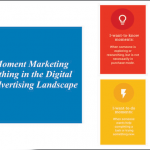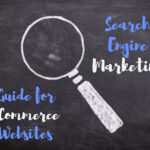Effective marketing strategies are paramount to business success. And one key area that companies often underutilize is Microsoft’s Bing Ads. It offers an often-overlooked platform that boasts numerous benefits and can serve as a viable channel for reaching new customers.
“Digital ads can increase brand awareness by 80%.”
This article will explore Bing Ads, discussing its various features, benefits, and strategies for effective use.
Understanding Bing Ads
Bing Ads, renamed Microsoft Advertising in 2019, is Microsoft’s version of a search engine marketing (SEM) service. It allows businesses to display ads on both the Bing and Yahoo networks, which include sites like MSN and other partner sites.
Consumers are 155% more likely to look up your brand-specific terms after they’ve been exposed to display ads.
This service can be managed internally, or businesses may consider taking advantage of a Bing Ads agency to maximize the platform’s benefits. It utilizes a pay-per-click (PPC) model, which stipulates that businesses are charged solely when a user interacts with their ad by clicking on it.
Though Bing holds a smaller market share, it represents a significant portion of the search engine market. This percentage translates to millions of users, presenting a substantial and often untapped audience for advertisers. By taking advantage of a Bing ads agency, businesses can potentially tap into this untapped audience more effectively and efficiently.
Features And Benefits
-
Less Competition And Lower Costs
Due to fewer businesses using Bing Ads, competition is significantly lower compared to Google Ads. Lower competition often leads to lower cost-per-click (CPC). This provides businesses, especially those with limited budgets, the opportunity to generate more clicks and conversions at a lower cost.
-
Better Device And Demographic Targeting
Bing Ads offers granular targeting options. Advertisers can choose when their ads will be displayed based on device, time, location, and even demographic data, allowing for more precise ad placements. Such detailed targeting options allow marketers to reach their ideal audience more effectively and efficiently, leading to higher conversion rates.
-
High-Quality Traffic
Studies show that Bing users tend to be more mature and have higher income levels than the average internet user. They also spend more when shopping from their desktops compared to the average web user. This means that while Bing might attract fewer users than Google, the users it does attract often prove to be high-quality leads.
-
Search Partner Targeting
Bing’s Search Partner targeting feature is a unique selling proposition. This feature allows advertisers to target users on Bing’s network of partner websites. It expands the potential reach of an advertisement and offers a more diverse audience.
-
Lower Costs And Greater Visibility
As previously stated, the lower competition on Bing Ads often results in lower costs-per-click (CPC). But another noteworthy point is the ad position. Your ad is more likely to appear at the top of the search results page on Bing. This increased visibility can translate to higher click-through rates (CTR), leading to a higher return on investment (ROI).
-
Superior Demographic And Location-Based Targeting
Bing Ads offers granular control over who sees your ads. For instance, Bing Ads allows you to adjust bids or even turn off your ads for specific demographics. This level of control can help marketers optimize their campaigns and avoid wasted ad spend.
When it comes to location targeting, Bing allows you to target ads at the postal code level. This can be particularly beneficial for local businesses trying to attract customers in their immediate vicinity.
-
Social Extensions
Bing Ads offers Social Extensions, a feature that allows advertisers to link their social media profiles to their ads. This not only enhances the visibility of businesses’ social media channels but also allows potential customers to engage with the brand on different platforms directly from the ad.
-
Visual Ads
Bing’s Image Extensions allow advertisers to add relevant images to their search ads. This feature helps ads stand out and can greatly improve engagement rates. As users tend to respond better to visual information, incorporating images into your ads can significantly enhance their effectiveness.
-
Syndicated Search Partners
Bing’s Search Network includes not only Bing and Yahoo but also their syndicated search partners. This means that your ads could be shown on a host of different sites that use Bing to power their search results. This further extends the potential reach of your advertisements.
-
Import Directly From Google Ads
Bing Ads allows advertisers to import their campaigns directly from Google Ads. This feature can save time and make it easy for businesses to start using Bing Ads. If you already have a well-optimized Google Ads campaign, this feature allows you to extend its reach with just a few clicks.
-
LinkedIn Profile Targeting
A unique feature of Bing Ads, LinkedIn Profile Targeting, enables advertisers to target users based on their company, job function, or industry listed on their LinkedIn profiles. This feature can be extremely valuable for B2B marketers or businesses looking to target specific professional groups.
Bing Ads offers an array of features that can provide significant benefits to advertisers. From superior demographic and location targeting to the integration of visual elements and social extensions, Bing Ads provides opportunities for improved ad performance and audience engagement. Combined with the ability to reach a high-income, mature audience, and the potential for lower CPCs, Bing Ads presents a compelling case for inclusion in any digital marketing strategy.
Strategies For Effective Use
-
Deep Dive Into Audience Research
Understanding the unique demographic of Bing users is crucial to running successful campaigns. The typical Bing user tends to be older, often above 35 years old. They also tend to have a higher income level.
Moreover, Bing’s audience is often more educated, with a significant portion having a bachelor’s degree or higher. Importantly, Bing users also spend 35% more when shopping online from their desktops compared to an average internet searcher. If your business targets this demographic, Bing Ads could be highly beneficial. Understanding these traits and how they intersect with your target audience can help you tailor your messaging and offerings effectively.
-
Maximizing Bing’s Keyword Research Tools
Keyword Planner in Bing Ads is a comprehensive tool that helps businesses discover new keywords related to their products or services. It provides important metrics like search volume trends, competition levels, and suggested bids for each keyword.
Furthermore, Bing’s Keyword Planner provides insights into the performance of existing keywords, showing how often keywords trigger your ad, their average CPC, and their performance by device, location, and time. These insights can help you refine your keyword strategy, choose high-performing keywords, and increase the effectiveness of your campaigns.
-
A/B Testing And Ad Refinement
A/B testing, or split testing, is a method of comparing two versions of an ad to see which performs better. Bing Ads’ A/B testing options allow businesses to experiment with every aspect of their ads, including headlines, ad copy, keywords, and calls-to-action.
For example, you might test two different headlines to see which one drives more clicks. Or you could experiment with different calls-to-action to see which one leads to more conversions. By continually testing and refining your ads, you can improve your ad performance over time.
Notably, Bing Ads also provides reports on your A/B testing results, offering valuable data to guide your ad optimization efforts. The report includes metrics like impressions, clicks, CTR, and conversions for each ad variation, helping you understand which elements of your ads are most effective.
-
Leveraging Bing’s Advanced Targeting Options
Bing’s targeting capabilities go beyond basic demographic and location-based targeting. One of the unique features Bing offers is dayparting or ad scheduling. This feature allows advertisers to specify certain times of the day or days of the week when their ads will run. If you know your audience is more likely to convert at specific times, you can schedule your ads to only run during those periods, making your ad spending more efficient.
Bing Ads also offers device targeting, allowing you to adjust your bids for different devices. For example, if you know that your audience is more likely to convert on desktops, you can increase your bids for desktop searches to boost your ad visibility.
Plus, Bing Ads provides extensive location targeting options, allowing you to target or exclude specific countries, cities, or even postal codes. This can be particularly beneficial for businesses targeting local customers or businesses operating in specific regions.
Finally, Bing allows you to adjust your bids based on demographic data, including age and gender. This granular control can help you reach your target audience more effectively and avoid wasted ad spending on demographics that are less likely to convert.
By understanding your audience, using Bing’s Keyword Planner effectively, continually testing and refining your ads, and leveraging Bing’s advanced targeting options, you can maximize the effectiveness of your Bing Ads campaigns. By doing so, you can reach a high-value audience that is often overlooked by businesses.
Final Thoughts
Bing Ads represent a valuable yet underutilized facet of digital marketing. It offers unique opportunities for businesses, often leading to lower costs, precise targeting, and access to a high-quality user base. Thus, it should be considered an important component of a diversified, holistic digital marketing strategy. By embracing Bing Ads, businesses have the potential to tap into new audiences and further their success.






